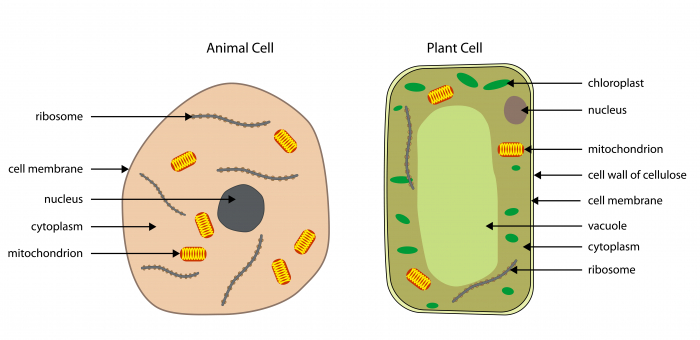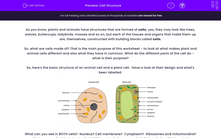As you know, plants and animals have structures that are formed of cells. Yes, they may look like trees, wolves, buttercups, ladybirds, mosses and so on, but each of the tissues and organs that make them up are, themselves, constructed with building blocks called cells.
So, what are cells made of? That is the main purpose of this activity - to look at what makes plant and animal cells different and also what they have in common.
What do the different parts of the cell do - what is their purpose?
So, here's the basic structure of an animal cell and a plant cell. Have a look at their design and what's been labelled.

What can you see in both cells? Nucleus? Cell membrane? Cytoplasm? Ribosomes and mitochondria?
What can you find that plant cells alone have in their structure? Cellulose cell wall? Vacuole? Chloroplasts?
Each of the structures present in the plant and animal cells has an important function to perform. For example, the nucleus controls the cell's activity, the cell membrane controls what enters and leaves the cell, and the cytoplasm stores and extracts the cell's food energy.
In a plant cell, the cell wall provides a rigid protective layer that supports the cell, the permanent vacuole contains cell sap, and the chloroplasts is where photosynthesis occurs, making food for the plant.
In this activity, we're going to look at how and why cells are designed the way they are.

Let's get started.








